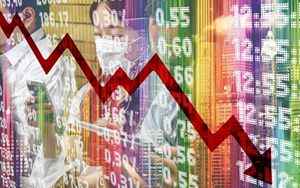(Finance) – “Lo macroeconomic scenario of the Italian economy appears subject to risks, above all of international matrix and mainly oriented to drop on growth “.
This was stated by the president of the Parliamentary Budget Office (Upb), Lilia Cavallari, in hearing before the Budget Committees of the Chamber and Senate on the DEF, assuming that the Office validates both the trend and the programmatic framework. The conflict between Russia and UkraineCavallari emphasized, “certainly represents the greatest risk across all forecast horizons for its immediate repercussions in terms of sudden price increases and for those deriving from the prolongation of the conflict and the possible restrictions on supplies not only of energy products, but also for agriculture and metallurgy “. For the UpB, the effects of the continuation of the conflict with respect to the hypothesis of its resolution in a relatively short time “indicate that the impact for the Italian economy would be not negligible”. Other risks include: “the evolution of the pandemic; possible effects of price increases and, in some cases, the shortage of raw materials and intermediate goods on a full, timely and efficient implementation of the PNRR investment projects; new economic policy structures aimed at reabsorbing the financial imbalances accumulated to face the pandemic crisis and the Russian-Ukrainian conflict. As regards the trend in inflation, the upside risks are confirmed “.
The public finance programmatic scenario presented in the EFD, he continued, “outlines a strategy of pragmatic prudence in a context of high macroeconomic and international uncertainty. In particular, the EFD approach is oriented towards a choice of programming continuity: the return of the deficit below 3 percent of GDP in 2025 and the gradual reduction of the ratio of public debt to GDP, with the aim of bringing it back – at the end of the decade – to the pre-pandemic level (134.1 per cent recorded in 2019) “. the debt-to-GDP target at the end of the decade (134.1%) and that set by the Government for 2025 (141.4%), reductions in this ratio should be achieved for the following years, on average, equal to about 1.5 percentage points of GDP per year, slightly lower than the decreases planned for the three-year period 2023-25. “This consolidation path, if confirmed, appears to be consistent with the principles set out in Europe which aim to reconcile financial sustainability and economic growth”, he said. Given the stability of the nominal balances compared to the previous programming, the expansionary orientation of the public finance strategy is therefore mainly entrusted to the implementation of the NRP, explains the UPB.
The programmatic framework of public finance, in fact, discounts the “full implementation of the PNRR interventions and of the complementary investment fund, which in particular has as a consequence very consistent growth rates of public investments already in trend trends, especially in the years 2022 and 2023 when, after the increase in 19.5 percent recorded in 2021, increases of 14.4 and 21.1 per cent respectively are expected “. Finally,” the importance of strengthening the process of reviewing and evaluating expenditure, which is also part of the enabling reforms of the PNRR, must be considered. in the awareness of the commitment necessary to achieve the moderation objectives of the current spending and, ultimately, debt sustainability “.
The baseline scenario of the DEF forecast “discount a resolution” of the war in Ukraine “in a relatively short time” which however appear “very uncertain”. If, on the other hand, the conflict “lasted for the whole of the second quarter and the normalization process involved the second half of the current year stagflationary economic effects sthey would be more evident “, continues Cavallari. The Italian economy, he stressed,” would be among the most affected by this shock and the GDP would suffer an additional contraction of about one and a half percentage points over the two years as a whole. At the same time we would see more marked increases in consumer prices, for about 2.5 percentage points cumulated in 2022-23 in the case of Italy “.
